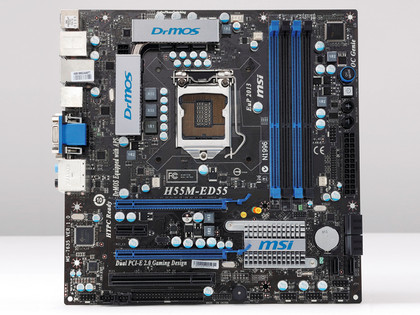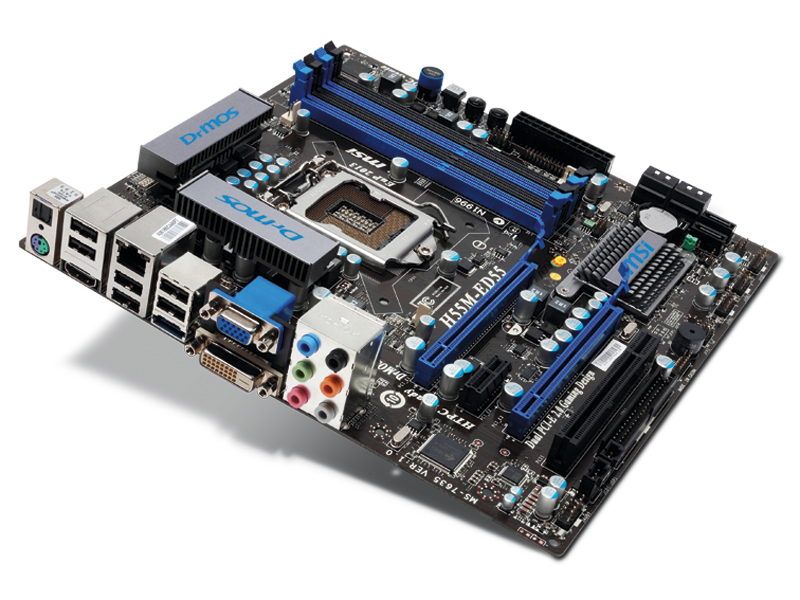TechRadar Verdict
A solid board at a sensible price. Lack of USB 3.0 and SATA 6Gbps seperate it from greatness.
Pros
- +
Excellent all round performance
- +
OC Genie actually works
Cons
- -
No USB 3.0
- -
No SATA 6Gbps
Why you can trust TechRadar
Mega money mobos with features to match are all very well. But most mere mortals want a mobo that ticks all the important boxes without threatening their mortgage payments.
At £70, the MSI H55M-ED55 is competitively priced for a board with Intel's LGA1156 socket. Thanks to the H55 chipset, it gives you plenty of options too.
Performance freaks can drop in a quad-core Core i7, hook up a discrete graphics card and watch the frame rates flow. Those on a tighter budget have the option of using Intel's dual-core CPUs with integrated graphics.
The MSI H55M-ED55's microATX form factor also strikes a handy balance between features, size and cost. With two PCI-e x16 slots along with further PCI-e x1 and PCI ports, expansion options are well catered for. Certainly, the H55M-ED55 is much more flexible than a Mini-ITX board such as the Gigabyte H55N-USB3.
Likewise, six SATA ports will be more than enough for most systems even if it's a shame none of them offer 6Gbps connectivity. Plenty of USB ports and headers are also provided but, again, none are USB 3.0 compliant.
Is the MSI H55M-ED55 a mainstream mobo designed to deliver maximum value or a performance-oriented board aimed at gamers? Actually, it's a little bit of both.

Extra features
Priced around £70, it's one of the cheaper LGA1156 boards currently available. It also eschews technological trinkets such as support for multi-GPU graphics technology.
Yes, there are two physical PCI-e x16 slots. But if you populate both, only one delivers 16 lanes of bandwidth while the other is limited to four lanes.
MSI has also opted not to spend money on adding chips for USB 3.0 or SATA 6Gbps. That's hardly the stuff of which world beating boards are made. Look a little closer, however, and you will find a few features normally exclusive to more expensive motherboards.
Most notable is the OC Genie button, MSI's auto overclocking utility. Flick the switch, reboot and the board takes around 30 seconds to discover what it reckons are the optimal overclocked settings.
In the case of our 2.93GHz Intel Core i7 870 test chip, the result is 3.6GHz with a baseclock of 188MHz. That's not the maximum you'll get out of an 870 processor, but it is a useful boost and much more than you typically get from auto-overclocking utilities.
Do the job manually and 210MHz from the baseclock is possible. As for stockclocked performance, the news is just as good with the exception of our World in Conflict game benchmark. That particular result is a little low compared to other H55 boards, but reflects the occasional vagaries of game benchmarks more than it does the capabilities of the mobo.
Technology and cars. Increasingly the twain shall meet. Which is handy, because Jeremy (Twitter) is addicted to both. Long-time tech journalist, former editor of iCar magazine and incumbent car guru for T3 magazine, Jeremy reckons in-car technology is about to go thermonuclear. No, not exploding cars. That would be silly. And dangerous. But rather an explosive period of unprecedented innovation. Enjoy the ride.
